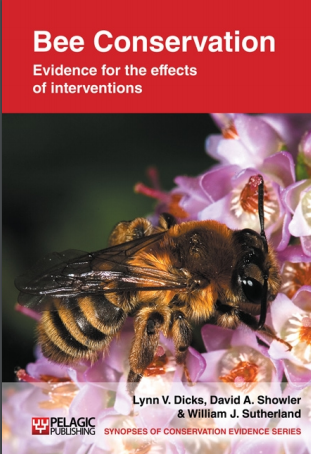Leave arable field margins uncropped with natural regeneration
-
Overall effectiveness category Awaiting assessment
-
Number of studies: 6
View assessment score
Hide assessment score
How is the evidence assessed?
-
Effectiveness
not assessed -
Certainty
not assessed -
Harms
not assessed
Study locations
Supporting evidence from individual studies
Nine bee species were recorded on a single naturally regenerated field margin strip established for three years at ADAS Bridgets Research Centre, Hampshire, England in 1998 (Carreck et al. 1999), the same number of species as on three strips sown with a diverse wildflower seed mix in the same study.
Study and other actions testedA small replicated, controlled trial of field margin management options on two farms in North Yorkshire, England in one summer (Meek et al. 2002) did not find significantly more bumblebees Bombus spp. (species or individuals) on four naturally regenerated 6 m wide margins than on four cropped margins.
Study and other actions testedA replicated controlled trial of UK arable field margins allowed to regenerate naturally for one year found that they supported significantly more honey bees and bumblebees than unsprayed cropped margins managed as conservation headlands (averages between 10 and 50 bees/transect on naturally regenerated margins compared to <3 bees/transect in conservation headlands; Kells et al. 2001).
Study and other actions testedIn a replicated controlled trial on three arable field margins at one farm in North Yorkshire, Carvell et al. (2004) found 6 m wide naturally regenerated, uncultivated field margin plots supported significantly more foraging bumblebees than margins sown with tussocky grass, or control cropped field margins, but only in one year (2001) of this three year study. In the other two years (2000 and 2002), the naturally regenerated field margins did not support significantly more bumblebees than the control or grass-sown sites. In 2001, the bumblebees were mostly foraging on spear thistle Cirsium vulgare, a pernicious agricultural weed that had to be controlled by cutting at the end of that summer. Naturally regenerated margins were the only treatment that did not support consistent numbers of bumblebees in all three years.
Study and other actions testedBumblebee foraging activity and species richness were significantly enhanced on 18 uncropped, regularly cultivated field margins where natural regeneration had been allowed to take place for five years, compared to paired control sites of conventionally managed cereal, in East Anglia and the West Midlands, England (Pywell et al. 2005). The uncropped margins had significantly more plant species than either conservation headlands or uncropped margins sown with a wildflower seed mix. However, two species considered to be pernicious weeds, spear thistle and creeping thistle C. arvense were key forage plants for the bumblebees, so this option may lead to conflict between agricultural and conservation objectives.The naturally regenerated field margins supported fewer bumblebees (18 individuals and 2.7 species/100 m on average) than margins sown with a wild flower seed mixture (29 bumblebees, 3.0 species/100 m), but the two treatments were not directly compared in the analysis.
Study and other actions testedIn a replicated controlled trial at six sites across central and eastern England, Carvell et al. (2007) found that naturally regenerated field margins supported a greater number and diversity of foraging bumblebees than cropped margins (including conservation headlands), but only in the first year of the study. In subsequent second and third years, bumblebee numbers were not significantly different from cropped treatments, but this may be due to the presence of more attractive floral resources planted on the same field margins for the experiment.
Study and other actions tested
Where has this evidence come from?
List of journals searched by synopsis
All the journals searched for all synopses
This Action forms part of the Action Synopsis:
Bee Conservation
Bee Conservation - Published 2010
Bee Synopsis





)_2023.JPG)














